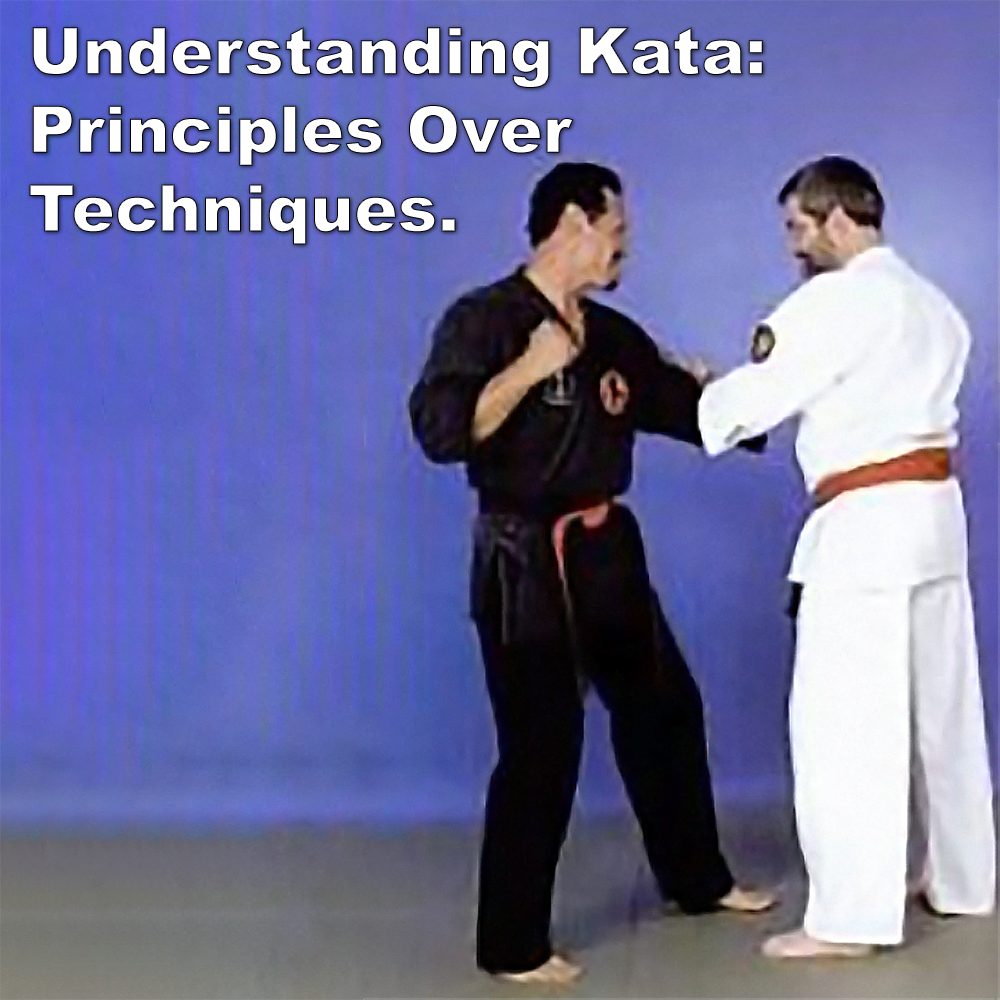
Understanding Kata: Principles Over Techniques.
Posted by ADAM CARTER on OCT 02, 2024

Understanding Kata: Principles Over Techniques.
(Approx 2 minute 35 second read)
Many applications of kata focus too heavily on the individual techniques – the limb movements shown in the kata – while neglecting the underlying principles that give those techniques life.
When you focus only on specific techniques, kata often seems to be just a sequence of moves to memorize, but true practice goes beyond that.
The principles within the kata offer options and the ability to adapt. Techniques without understanding their principles are like knowing words without understanding grammar – you may know a punch or a ‘block’, but if you don’t understand when, why, or how to use it, you’re at a disadvantage.
Let’s consider a simple example: an enemy grabs your clothing with one hand and prepares to punch with the other. Now, stop for a moment and think. Which is the most dangerous limb? Is it the hand holding your clothing, or the hand about to put a dent in your head?
The real threat is the punch. If you focus solely on releasing the grab, you might expose yourself to the more imminent danger – the punch. Remember, the punch could follow immediately, and if you’re focused on removing the grab that’s tightly holding your clothing, you’ll miss the most dangerous threat.
I hope it’s obvious, but you don’t want to be worrying about grip stripping like this if it’s a high-violence situation and your opponent is about to – or is already – hurling punches at you.
What if your opponent has a weapon in the opposite hand? In that case, the danger multiplies. You cannot afford to fixate on just one limb or a single technique from your kata. You must prioritize the immediate threat while maintaining awareness of the entire situation.
One of the most crucial principles that kata teaches us is prioritization. The grab, while it needs to be addressed, is not your immediate concern. The punch or the weapon in the other hand is the real threat. This is where principles come into play. Ideally, you would deal with both threats, but you cannot sacrifice your safety by overcommitting to one.
Your enemy can always switch things up – a punch might become a push, or a grab might turn into a choke. Techniques in isolation are static, but principles are fluid. They allow you to adapt when your opponent changes their attack. You must be ready to adjust, and you can only do that if you understand the principles governing your movements.
In the example, the principle is that you don’t ignore the grab, but you don’t focus on it at the expense of the more dangerous attack. Ideally, your response would be one that addresses both, but your primary effort should go towards defending against the immediate threat.
In a real encounter, you can’t afford to think that “This grab calls for technique A, and that punch calls for technique B.” What if technique A fails? What if the opponent doesn’t follow the pattern you’ve trained for? The real world doesn’t operate on scripts – every situation is different.
Kata isn’t about memorizing a sequence of perfect techniques; it’s about embedding principles into your muscle memory – principles like prioritizing threats, maintaining balance, getting off the attack line, adapting to changing circumstances, and more.
So, the next time you practice applications, don’t just think about ‘what’ your hands and feet are doing. Consider ‘why’ you are doing it. What principle are you applying?
Remember this: a technique is singular, bound to a specific movement, but principles are not. They are adaptable, flexible, and alive in every moment of conflict. When you understand the difference, you stop trying to master techniques and instead start mastering movement.
Written by AC.
![]() Photo Credit: With thanks to Chris Thomas, from Black Belt magazine photo shoot with Ken Moreno.
Photo Credit: With thanks to Chris Thomas, from Black Belt magazine photo shoot with Ken Moreno.
